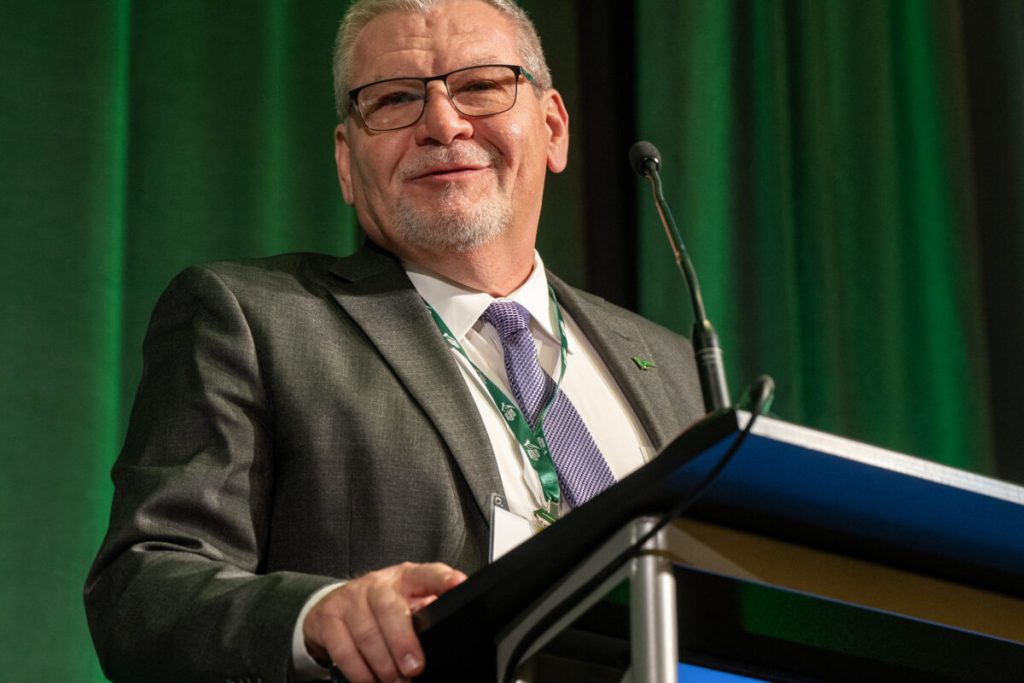
Phillip Good was elected Chairman of the United Soybean Board last December. Oklahoma Farm Report’s Stevie White caught up with him to determine his goals for the organization going forward.
From Maken, Mississippi, Good brings a wealth of experience and knowledge to the position. He and his son raise soybeans, corn, cotton, catfish and cattle. He is beginning his eighth year of service to the United Soybean Board having previously served as Demand Chair, Chair of the Audit and Evaluation Committee, and Secretary and Treasurer.
“It is my great honor and privilege, and I am humbled to serve as Chairman,” he said. “I get the opportunity to work with previous chairs that are still on the Board.”
He decided to run because he enjoys working with those other farmer/leaders who serve and was asked by many of them to do it. “I really look forward to the opportunities this year with the goals that we set as an executive committee,” he said. “I am very honored to work with the staff and executive committee in many different ways, and I think we have an outstanding year ahead of us.”
Knowing that soybean farmers are faced with a lot of challenges, Good looks forward to working with the United Soybean Board to find and increase efficiencies on the farm.
“The soybean really is a magic bean, and the opportunities are absolutely limitless,” he said. “When I think about the supply side, we have the challenge of soybean cyst nematode that farmers across the nation are dealing with, and there are a lot of different opportunities to help solve the problems it presents.
“On the demand side, we have a lot of opportunities in the marketplace. Number 1, I think about exports. We’ve done a great job in the export arena, but we can still build and grow.”
He cited the recent completion of a five-year ROI study. It showed that for every dollar invested, a $12.30 return was received by the U.S. Soy farmer.
“That opportunity allowed us to look at exports in fresh and new ways. We have created a new export strategy work group that will be working with our partners to try to give us all the greatest return from every dollar invested there. We want to continue to work with our poultry partners as poultry is our number 1 consumer of soymeal. We are excited about improving some of the amino acid levels and protein levels of the soybean when it comes to our swine customers. The high oleic roasted soybeans are just phenomenal with what we are seeing in the dairy industry, so when you think about 800,000 cows who consume roasted high oleic soybeans, and if each one of them consumed up to one acre in a year, that would be 800,000 acres that would be needed just for high oleic soybeans alone,” he detailed excitedly.
In addition to those demands for the meal, the soybean oil is under strong demand for biofuels on the rail, marine, and in the air.
“We are looking for exports, whether they are whole soybeans, soybean meal, oil or even meats. Truly the passion of all of us farmers is to feed the world, and we’ve got a great opportunity to do that with food and with fuel,” Good said.
He anticipates higher input costs to be a hurdle in the upcoming growing season along with the ever present challenges of weather.
“With those challenges, we are looking to see where we can create efficiencies,” he said. “We have identified some and we are working on that. Our staff is outstanding, and they are getting the job done for us as well.”
He concluded by expressing gratitude for the Soybean Checkoff and what it does for his own farm and the united voice and effort that it creates for all soybean farmers. For more information, visit unitedsoybean.org.

















